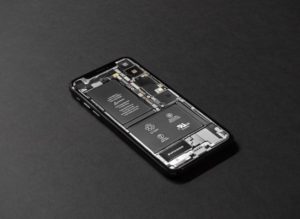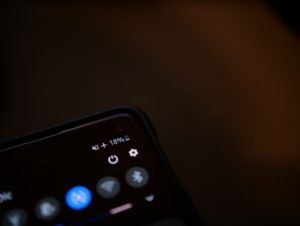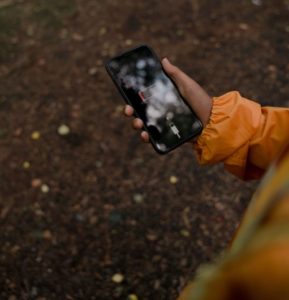
Easy Ways to Extend Your Phone’s Battery Life
Over the years, battery life on smartphones has seen improvements with each new generation; but it’s still not perfect. We can all agree that it’s overly frustrating when your phone dies while you’re in the middle of something important. In this article, we’ll show you how to save your smartphone’s battery life.
Your Display
The number one battery eater on a smartphone is its display. Especially now, when some devices have high-refresh rates of up to 165 Hz and brightness levels of up to 2000 nits.
So to save your battery, what you can do is lower your phone’s high refresh rate (if it has one) and reduce its brightness. Learn how to lower your iPhone’s refresh rate here.
Use Wi-Fi
Mobile data uses a lot more battery than a Wi-Fi connection. This is because signal towers are usually far away from the device. As a result, your phone must send and receive signals over a greater distance than when using Wi-Fi from a nearby router. Another reason that data drains your battery faster, is that your smartphone will be constantly searching for a signal. The effects of this on your battery gets worse when you’re in an area with poor signal. Some apps will also use your mobile data in the background, causing more battery drain.
To save your battery, it’s best to use Wi-Fi more and turn off your mobile data when you don’t need it. Also, don’t forget to turn your Wi-Fi off when you’re not using it and aren’t connected to any Wi-Fi.
Stop Apps From Running In The Background
There are a lot of apps that consume battery in the background. And most times the services those apps provide by staying active in your background are ones you can live without.
It is possible to reduce background app activity to stop it from draining your battery. To do this, go to battery usage in your settings, then check the apps with the most activity in the background. Then go back to your app drawer and press and hold an app until a menu pops up. Click “app info,” then press “battery.” Toggle Background Activity off.
Dark Mode
If your phone uses an AMOLED or OLED screen, then this is for you. If not, you can skip this section.
For smartphones that use AMOLED or OLED screen technology, dark mode is a very good way to extend battery life. Using a darker wallpaper is also helpful. The reason for this is because of the way AMOLED and OLED screens work. In order to produce the color black, AMOLED and OLED displays completely turn off the pixels in that area. In other words, wherever there’s true black on your screen, that part is turned off.
Switching your phone to Dark Mode will make more parts of your phone’s UI and apps dark, thereby making your screen use less power.
Disable Your Mobile Assistant
Mobile assistants like Google and Siri are some of the most powerful and resource-hungry programs on your mobile device.
Assistants use a lot of resources in the background just to keep working properly. For example, your assistants keep your mic on at all times to hear your activation command (like Hey Google). They are also always connected to the internet or using mobile data to instantly answer your query.
To increase your battery life, it’s best to turn off your phone’s assistant. So here’s how to:
Google Assistant
Toggle off Google Assistant by opening the Google app, tapping your profile image in the top right corner, then going to Settings, Google Assistant, General, and turning it off.
Or
Turn off Google Assistant by saying Hey Google> Assistant Settings> Turn off Google Assistant.
Siri
Open your settings then, Siri & Search>Turn off Listen for “Hey Siri”
And toggle off “Press side button for Siri”
Bixby
Turning off Bixby isn’t as straightforward as the others; Here’s a link to a full guide on how to turn Bixby off.
Switch to Lite or Progressive Apps
As smartphones have continued to advance over the years, so have the apps within them. Apps have progressed to become very powerful and resource-hungry. Even simple apps consume more battery than you’d think. Hence the recent increase in the release of “lite” versions of apps.
Lite apps are basically watered-down versions of other apps. Lite versions typically take up less space and have fewer features, requiring less power and resources. Progressive web apps are app versions that can only be accessed through your browser. They can be installed and used offline. PWA consumes significantly less battery and resources.
So, switching to the lite and PWA versions of your apps (if available) is a great way to increase your battery life.
Power saving mode
I don’t think I have to talk too much about this, but power saver mode is the number 1 way to save battery on your smartphone. It dims down your screen, and reduces CPU performance which are two major battery hogs in devices. It also cuts off some features.
To turn on power saving mode, go to your quick settings in your notification panel, and you should see Power Mode or something similar to that. Click it to turn on your power-saving mode. Long press to bring up a detailed menu with all of your power-saving modes and settings.
Conclusion
If you’ve tried all of our tips and tricks and are still seeing consistent low battery and quick power drainage, it may be time to replace your battery. Luckily, SmartphonesPLUS has you covered! Learn more about our quick and affordable battery replacement process by stopping in to one of our two Midwest locations.









2 thoughts on “Easy Ways to Extend Your Battery Life”
[…] the keys to extending your battery life can help a lot. The best you can do is buy your S23 Ultra from reliable refurbished vendors. That […]
[…] 80% of its original capacity, this is usually when you’ll need to start taking measures to extend your battery life. However, anything greater than 80% is generally considered […]